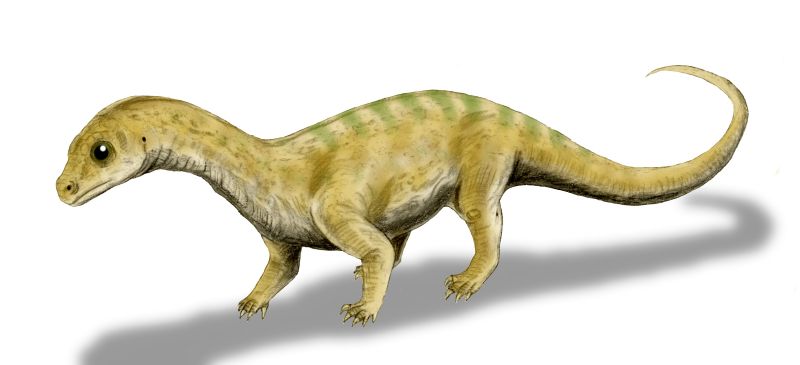Post by theshee on Jan 26, 2012 9:01:49 GMT 10
An ancient dinosaur nursery – the oldest nesting site ever found – has been unearthed in an excavation at a site in South Africa.
The 190-million-year-old nesting site of the prosauropod dinosaur Massospondylus reveals significant clues about the evolution of complex reproductive behaviour in early dinosaurs.
It discover clutches of eggs, many with embryos, as well as tiny dinosaur footprints, providing the oldest known evidence that the hatchlings remained at the nesting site long enough to at least double in size.
“This research project, which has been ongoing since 2005 continues to produce groundbreaking results and excavations continue. First it was the oldest dinosaur eggs and embryos, now it is the oldest evidence of dinosaur nesting behaviour,” said Prof. Bruce Rubidge, Director of the Bernard Price Institute (BPI) at Wits.
The authors say the newly unearthed dinosaur nesting ground is more than 100 million years older than previously known nesting sites.
At least ten nests have been discovered at several levels at this site, each with up to 34 round eggs in tightly clustered clutches. The distribution of the nests in the sediments indicate that these early dinosaurs returned repeatedly (nesting site fidelity) to this site, and likely assembled in groups (colonial nesting) to lay their eggs, the oldest known evidence of such behaviour in the fossil record.
The large size of the mother, at six metres in length, the small size of the eggs, about six to seven centimetres in diameter, and the highly organised nature of the nest, suggest that the mother may have arranged them carefully after she laid them.
“The eggs, embryos, and nests come from the rocks of a nearly vertical road cut only 25 metres long,” explained Canadian palaeontologist Prof. Robert Reisz, a professor of biology at the University of Toronto at Mississauga, who led the study.
“Even so, we found ten nests, suggesting that there are a lot more nests in the cliff, still covered by tons of rock. We predict that many more nests will be eroded out in time, as natural weathering processes continue,” he said.
The fossils were found in sedimentary rocks from the Early Jurassic Period in the Golden Gate Highlands National Park in South Africa. This site has previously yielded the oldest known embryos belonging to Massospondylus, a relative of the giant, long-necked sauropods of the Jurassic and Cretaceous periods.
The discovery was published in the prestigious international journal Proceedings of the National Academy of Sciences (PNAS).
www.discoveryon.info/2012/01/oldest-dinosaur-nursery-found-in-south-africa.html
The 190-million-year-old nesting site of the prosauropod dinosaur Massospondylus reveals significant clues about the evolution of complex reproductive behaviour in early dinosaurs.
It discover clutches of eggs, many with embryos, as well as tiny dinosaur footprints, providing the oldest known evidence that the hatchlings remained at the nesting site long enough to at least double in size.
“This research project, which has been ongoing since 2005 continues to produce groundbreaking results and excavations continue. First it was the oldest dinosaur eggs and embryos, now it is the oldest evidence of dinosaur nesting behaviour,” said Prof. Bruce Rubidge, Director of the Bernard Price Institute (BPI) at Wits.
The authors say the newly unearthed dinosaur nesting ground is more than 100 million years older than previously known nesting sites.
At least ten nests have been discovered at several levels at this site, each with up to 34 round eggs in tightly clustered clutches. The distribution of the nests in the sediments indicate that these early dinosaurs returned repeatedly (nesting site fidelity) to this site, and likely assembled in groups (colonial nesting) to lay their eggs, the oldest known evidence of such behaviour in the fossil record.
The large size of the mother, at six metres in length, the small size of the eggs, about six to seven centimetres in diameter, and the highly organised nature of the nest, suggest that the mother may have arranged them carefully after she laid them.
“The eggs, embryos, and nests come from the rocks of a nearly vertical road cut only 25 metres long,” explained Canadian palaeontologist Prof. Robert Reisz, a professor of biology at the University of Toronto at Mississauga, who led the study.
“Even so, we found ten nests, suggesting that there are a lot more nests in the cliff, still covered by tons of rock. We predict that many more nests will be eroded out in time, as natural weathering processes continue,” he said.
The fossils were found in sedimentary rocks from the Early Jurassic Period in the Golden Gate Highlands National Park in South Africa. This site has previously yielded the oldest known embryos belonging to Massospondylus, a relative of the giant, long-necked sauropods of the Jurassic and Cretaceous periods.
The discovery was published in the prestigious international journal Proceedings of the National Academy of Sciences (PNAS).
www.discoveryon.info/2012/01/oldest-dinosaur-nursery-found-in-south-africa.html






 Happy New Years Everybody!!!
Happy New Years Everybody!!!
